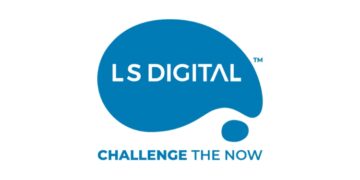On Father’s Day, my daughters offered to treat me to a delightful lunch outing in Pune. The prospect of a long drive in our new car followed by a scrumptious meal was truly enticing. However, upon arriving at the restaurant, I noticed something peculiar—the name board read as ‘Papagoto’. The name had transformed from Mamagoto, a popular restaurant located at Pavilion Mall. It suddenly dawned on me that they had temporarily changed their name to commemorate Father’s Day. I have written about marketing during festivals and moment marketing. But this was different. This experience got me contemplating the fascinating ways in which brands often associate themselves with special events and causes, even going so far as to tinker with their cherished logos or identities to convey a meaningful message and further endear themselves to their audience.
 This strategic marketing approach, known as cause marketing or temporary rebranding, involves a company altering its brand identity, including the name, logo, tagline, or visual elements, for a specific period or purpose. This temporary transformation serves as a short-term tactic designed to create buzz, generate interest, or support a particular campaign or event. The advantages of cause marketing and temporary rebranding are numerous.
This strategic marketing approach, known as cause marketing or temporary rebranding, involves a company altering its brand identity, including the name, logo, tagline, or visual elements, for a specific period or purpose. This temporary transformation serves as a short-term tactic designed to create buzz, generate interest, or support a particular campaign or event. The advantages of cause marketing and temporary rebranding are numerous.
One significant advantage is the increased visibility that comes from capturing the attention and curiosity of consumers, media outlets, and the general public. By creating a new and distinct brand identity, companies can successfully engage their target audience, setting themselves apart from competitors. This injection of freshness and novelty breathes new life into the brand, reigniting interest among customers who may have grown accustomed to the existing brand identity.
Furthermore, cause marketing and temporary rebranding offer companies the opportunity to connect with specific target audiences. By tailoring the brand identity to align with their interests, values or preferences, companies can attract new customers who may not have previously engaged with the brand. This personalised approach helps foster a deeper connection between the brand and its audience, resulting in increased engagement and brand loyalty.
Numerous contexts exist where brands adopt temporary rebranding strategies. For instance, companies often align themselves with major sporting events by temporarily changing their branding to generate excitement and associate their brand with the event. Similarly, retailers frequently adopt temporary rebranding during holiday seasons to create a festive atmosphere that resonates with consumers seeking seasonal products or gift ideas.
Several noteworthy examples demonstrate the effectiveness of temporary rebranding in supporting causes. Fevicol, a well-known adhesive brand, stretched their logo to convey the message of maintaining physical distancing during the Covid19 pandemic. Audi, renowned for its four interlocking rings logo, pulled the rings apart to beautifully symbolise the importance of social distancing. These creative adaptations effectively communicated important messages to the audience.

Another remarkable instance is when Lacoste, famous for its alligator logo, replaced it with embroidered images of 10 threatened animals on their T-shirts. This change aimed to raise awareness about endangered species and received significant attention during Paris Fashion Week 2018. Mahindra Rise emphasised sustainability and environmental conservation during Earth Hour, showcasing their commitment to energy conservation and environmental protection.
Brands like WeWork also utilise temporary rebranding to promote inclusivity and support causes. During Pride Month, couple of years back, WeWork changed the signage on its office building in Gurugram to signal inclusiveness in the workspaces. Similarly, Airbnb temporarily tweaked its brand identity to reflect the ethos of their #Mankind campaign, highlighting the kindness and openness of the Airbnb community.
McDonald’s is another brand that effectively utilises cause marketing. On International Women’s Day, they flipped their iconic Golden Arches as a tribute to women. Additionally, its Father’s Day campaign humorously depicted a balding bun (represented by sesame seeds) as a playful dedication to all the fathers who lose their hair while caring for their children.


While cause marketing and temporary rebranding offer great potential, it is essential to execute them thoughtfully. Considerations such as maintaining consistency, communicating the temporary nature of the rebranding, and ensuring alignment with the overall brand strategy are crucial for preserving brand recognition and long-term brand equity.

In the month of June, some brands received praise for their heart-warming Father’s Day promotions and campaigns that create emotional connections. However, during the same month, which is also celebrated as Pride Month, certain brands faced accusations of tokenism for using superficial gestures, such as changing logos or running social media ads, without genuinely supporting LGBTQ+ rights and inclusion – ‘Rainbow Washing’. Customers often see through this symbolism and develop disdain for brands that lack authenticity.

Returning to Father’s Day, my daughters made the day memorable by celebrating it with me, ensuring I received the ‘free’ mocktail being offered as a promotion, and taking selfies with me for their Snapchat posts. Although I felt like a prop that day, I couldn’t help but feel appreciative. And, of course, I gladly paid the bill. Happy Father’s Day to all the wonderful fathers out there.
(The author is a senior professional in the corporate sector and writes on varied topics that catch his fancy. The views expressed here are his own. Twitter: @sandeepbangia)
(First published by The Free Press Journal BrandSutra. Content powered by MediaNews4u.com. Feedback: [email protected])

















